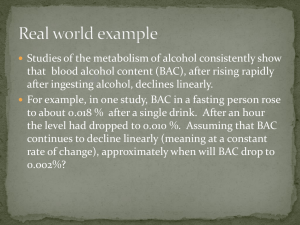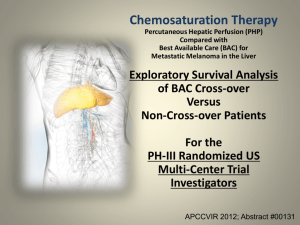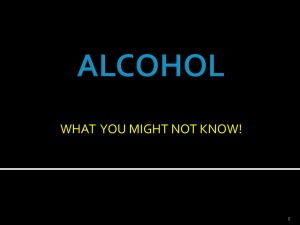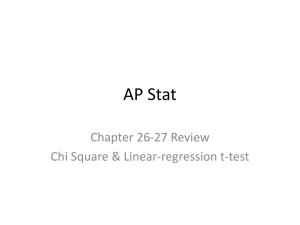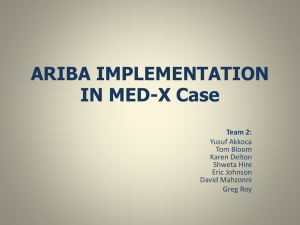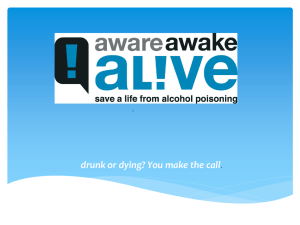Presentation Slides
advertisement
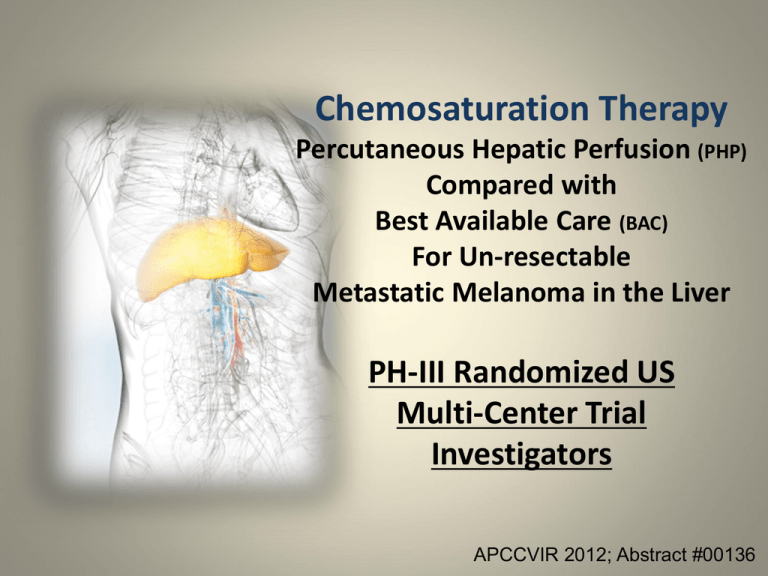
Chemosaturation Therapy Percutaneous Hepatic Perfusion (PHP) Compared with Best Available Care (BAC) For Un-resectable Metastatic Melanoma in the Liver PH-III Randomized US Multi-Center Trial Investigators APCCVIR 2012; Abstract #00136 PHASE 3 STUDY INVESTIGATORS Marybeth Hughes, National Cancer Institute, Bethesda, MD H. Richard Alexander, U. of Maryland School of Medicine, Baltimore, MD Mark Faries, John Wayne Cancer Institute, Santa Monica, CA James F. Pingpank, U. of Pittsburgh, Hillman Cancer Center, Pittsburgh, PA Jonathan S. Zager, Moffitt Cancer Center, Tampa, FL Sanjiv Agarwala, St Luke’s Hospital and Health Network, Bethlehem, PA Charles W. Nutting, Swedish Medical Center, Englewood, CO Richard Royal, U. of Texas, MD Anderson Cancer Center, Houston, TX Gary Siskin, Albany Medical Center Hospital, Albany NY Eric Whitman, Atlantic Melanoma Center, Morristown, NJ CHEMOSATURATION Therapy (CS-PHP) Isolation Saturation A PERCUTANEOUS ALTERNATIVE to IHP Filtration Filtration Procedure Chemo Filtration Circuit Chemo Isolation & Delivery Circuit MELPHALAN A bi-functional alkylating agent (nitrogen mustard) Not cell-cycle specific – binds DNA strands Cytotoxic effects are related to concentration and duration of exposure Non-toxic to normal hepatocytes Track record with surgical IHP Pharmacokinetic data Bioavailability Up to 89% Metabolism Hydrolysis Half-life 1.5 ± 0.8 hours Excretion Renal, significantly metabolized Drug Levels During Therapy Melphalan (μg/ml) 20 Pre-filter Post-filter Systemic Infusion 3.0 mg/kg 15 10 Hepatic Dose 5 Systemic Dose 0 0 10 20 30 40 50 60 70 Minutes Pingpank JF, et al. J Clin Oncol 2005;23:3465–74 PHASE III: CS-PHP VS. BAC STUDY DESIGN ELEMENTS • • • • • Conducted under Special Protocol Assessment (SPA) of US-FDA: • Primary Endpoint: Hepatic Progression Free Survival (hPFS) • Cross-Over: of BAC patients at hepatic progression • Stratification: Cutaneous vs. Ocular Lead Center: National Cancer Institute (NIH) • Accrual: 93 patients/10 Institutions Melphalan dose = 3.0 mg/kg (from Phase 1 Trial) Key Secondary Endpoints : • Response rate & Duration of Response • Overall Survival • Safety & Tolerability Staging Scans: Evaluation by RECIST Criteria PHASE III: PHP-CS VS. BAC STATISTICAL ANALYIS PLAN Sample size: 46 patients per arm • Alpha: p≤0.05 (2-sided ) • Power: 80% to detect a difference of 4 months Hepatic PFS • Expected Hepatic PFS (used for sample size determination) • PHP (Treatment): 7.73 months • Best Alternative Care (Control): 4 months • Response Rate (CR+PR) Detection: 88% power to detect a difference • Analysis of Results by Intent-to-Treat (ITT) • Statistical Significance: p < 0.05 • PHP-CS Arm Treatment Schema On Study Evaluation/Randomization Post Treatment Follow-up Interval Evaluation* (Baseline, 6-weeks, 12 weeks, 20 weeks, 28 weeks, 36 weeks) Treatments 1 through 6 - Melphalan - Angiogram (Celiac, SMA) - GDA assessment (Treatment #1) 4-5 Weeks 4-5 Weeks 4-5 Weeks 4-5 Weeks 24-30 weeks *Scan Evaluation (hPFS) using RECIST Criteria 4-5 Weeks 4-5 Weeks PHASE III PRELIMINARY RESULTS* Randomization and Treatment Schematic Total Accrual: 93 patients (PHP: 44; BAC: 49, Crossover: 28) MELANOMA METASTATIC TO LIVER (N = 93) R A N D O M I Z E 1:1 PHP ARM (N= 44) H E P A T I C FOLLOW-UP Cross over to BAC ARM (N = 49) Scan Evaluation (hPFS) using RECIST Criteria P R O G R E S S I O N CHEMOSATURATIOIN PHP (n=28, 57%) FOLLOW-UP Pingpank JF, et al. ECCO-ESMO 2011 Patient Demographics Baseline Characteristic Category PHP N=44 (%) BAC N=49 (%) P value* Age (years) Mean 55 55 NS Gender Male Female 23 (52) 21 (48) 22 (45) 27 (55) NS Race White Non-White 44 (100) 0 (0) 48 (98) 1 (2) NS ECOG Missing 0 1 3 (7) 37 (84) 4 (9) 4 (8) 42 (86) 3 (6) NS Primary Tumor Ocular Cutaneous 39 (89) 5 (11) 43 (88) 6 (12) NS *Fisher’s Exact Test. Two-sided PR <= P Well-Balanced Randomization Pingpank JF, et al. ASCO 2010 Therapy Prior to Randomization Therapy CS-PHP N=44 (%) BAC N=49 (%) All N=93 (%) P Value* Radiation (primary tumor) 23 (52) 24 (49) 47 (51) NS Chemotherapy 7 (16) 6 (12) 13 (14) NS Immunotherapy 6 (14) 7 (14) 13 (14) NS Image Directed Local Therapy 2 (5) 3 (6) 5 (5) NS Unknown 0 (0) 1 (2) 1 (1) NS No differences between two groups *Fisher’s Exact Test. Two-sided PR <= P Pingpank JF, et al. ASCO 2010 PH-III Randomized US Trial Primary End Point Hepatic Progression-free Survival (ITT) Survival probability 1.0 CS-PHP BAC 0.8 0.6 8.0 1.6 0.4 p<0.0001 Hazard Ratio: 0.35 (CI: 0.23-0.54) 0.2 0.0 0 3/31/11 5 10 15 20 25 Months 30 35 Pingpank JF, et al. ECCO-ESMO 2011 PH-III Randomized US Trial Secondary End Points Overall Progression-free Survival (ITT) Survival probability 1.0 CS-PHP BAC 0.8 0.6 6.7 1.6 0.4 p<0.0001 Hazard Ratio: 0.36 (CI: 0.23-0.57) 0.2 0.0 0 5 10 15 20 25 Months 30 35 Pingpank JF, et al. ECCO-ESMO 2011 Overall Survival (ITT) Survival probability 1.0 CS-PHP BAC 0.8 0.6 9.9 0.4 Hazard Ratio: 1.08 (CI: 0.69-1.68) p=0.74 9.8 55% crossover 0.2 0.0 0 5 10 15 20 25 30 Months 35 40 45 50 55 Pingpank JF, et al. ECCO-ESMO 2011 Factors Associated with Survival Variable Hazard Ratio Confidence Interval Melphalan 0.3 0.18 – 0.50 Gender 1.1 0.70 – 1.81 >65 years old 1.3 0.66 – 2.56 Ocular/Cutaneous 0.7 0.32 – 1.71 >1 year of disease 0.8 0.45 – 1.46 Melphalan, controlling for all of the above 0.28 0.17 – 0.47 Survival was Highly Associated with Use of Melphalan with CS-PHP Pingpank JF, et al. ASCO 2010 Secondary Endpoint: Hepatic Response Rate Best Alternative Care CS-PHP (N=44) All (n=49) Crossover (N=28) CR 0 (0) 0 (0) 0 (0) PR 13 (29.5) 1 (2.0) 8 (28.6) SD 26 (59.1) 14 (28.6) 14 (50) PD 2 (4.5) 32 (65.3) 1 (3.6) NE 3 (6.8) 2 (4.1) 5 (17.9) 13 (29.5) 1 (2.0) 8 (28.6) Overall Response: n (%) Objective Response Rate (CR+PR) Disease Control Rate (CR+PR+SD): CS-PHP: 39 (88.6%) versus BAC: 14 (30.6%) Pingpank JF, et al. ECCO-ESMO 2011 Phase III: Treatment Related Toxicities of CS-PHP Treatment Related Toxicity*, Grade 3-4 and Grade 5, (116 treatments) Hematologic Neutropenia Thrombocytopenia Anemia Grade 3-4, n(%) 71 (61) 86 (74) 54 (47) Hepatic Elevated AST Elevated ALT Hyperbilirubinemia Increased alk. phos. 14 6 8 6 (12) (5) (7) (5) Grade 5, n(%) 1 (<1) 1 (<1) 1 (<1) *Percentages Per Cycle 44 Patients, 116 Treatments Pingpank JF, et al. ASCO 2010 PHASE 3 MELANOMA STUDY: SAFETY Most common grade 3/4 AEs (peri-procedure) o thrombocytopenia, anemia and hypoalbuminemia Melphalan-related neutropenia, leukopenia (in cycle) o febrile neutropenia in 6 (15%) patients Transient peri-procedural transaminitis and hyperbilirubinemia (10 - 30%) Non-hematological toxicities infrequent Three patients died of treatment-related events o hepatic failure, n=1 (99% liver replaced with tumor at autopsy; prophylactic allopurinol) o neutropenia, n=1 o pancytopenia, n=1 Conclusions • Significant improvement in hPFS (INV) – 6.4 months at median: HR 0.35 (p < 0.0001) • Consistent with IRC (incl. secondary endpoints) • No difference in mOS due to cross-over (ITT) – 55% crossover from BAC to PHP-melphalan • Transient LFT elevations – no Rx required • Expected & manageable toxicities of melphalan • Patients still alive as of April 30, 2012 – 2 BAC and 8 CS-PHP Thank you
